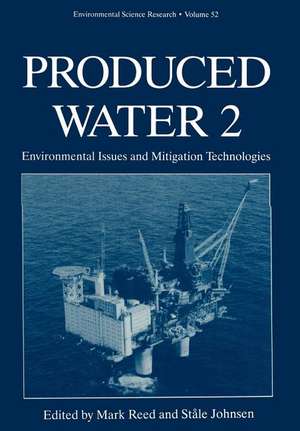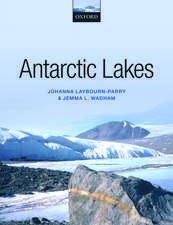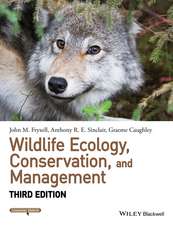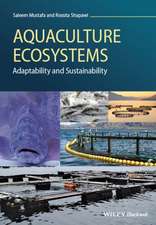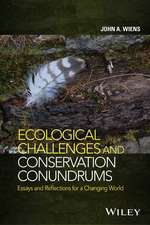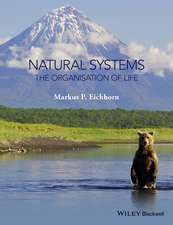Produced Water 2: Environmental Issues and Mitigation Technologies: Environmental Science Research, cartea 52
Editat de Mark Reed, Stale Johnsenen Limba Engleză Paperback – 17 sep 2011
Din seria Environmental Science Research
-
 Preț: 405.28 lei
Preț: 405.28 lei - 15%
 Preț: 583.75 lei
Preț: 583.75 lei -
 Preț: 413.76 lei
Preț: 413.76 lei -
 Preț: 386.81 lei
Preț: 386.81 lei -
 Preț: 391.61 lei
Preț: 391.61 lei -
 Preț: 403.53 lei
Preț: 403.53 lei -
 Preț: 398.74 lei
Preț: 398.74 lei -
 Preț: 405.06 lei
Preț: 405.06 lei -
 Preț: 397.59 lei
Preț: 397.59 lei -
 Preț: 410.66 lei
Preț: 410.66 lei -
 Preț: 410.88 lei
Preț: 410.88 lei -
 Preț: 391.02 lei
Preț: 391.02 lei - 15%
 Preț: 656.25 lei
Preț: 656.25 lei - 18%
 Preț: 1253.54 lei
Preț: 1253.54 lei - 15%
 Preț: 602.40 lei
Preț: 602.40 lei - 5%
 Preț: 387.58 lei
Preț: 387.58 lei -
 Preț: 409.89 lei
Preț: 409.89 lei -
 Preț: 406.80 lei
Preț: 406.80 lei -
 Preț: 415.29 lei
Preț: 415.29 lei -
 Preț: 426.06 lei
Preț: 426.06 lei -
 Preț: 405.53 lei
Preț: 405.53 lei -
 Preț: 394.29 lei
Preț: 394.29 lei -
 Preț: 406.05 lei
Preț: 406.05 lei -
 Preț: 403.15 lei
Preț: 403.15 lei -
 Preț: 409.13 lei
Preț: 409.13 lei -
 Preț: 433.36 lei
Preț: 433.36 lei -
 Preț: 399.50 lei
Preț: 399.50 lei - 15%
 Preț: 592.07 lei
Preț: 592.07 lei -
 Preț: 391.02 lei
Preț: 391.02 lei -
 Preț: 395.85 lei
Preț: 395.85 lei - 5%
 Preț: 1106.33 lei
Preț: 1106.33 lei -
 Preț: 391.79 lei
Preț: 391.79 lei - 5%
 Preț: 378.97 lei
Preț: 378.97 lei -
 Preț: 395.09 lei
Preț: 395.09 lei - 15%
 Preț: 670.82 lei
Preț: 670.82 lei -
 Preț: 395.85 lei
Preț: 395.85 lei - 5%
 Preț: 720.31 lei
Preț: 720.31 lei -
 Preț: 452.04 lei
Preț: 452.04 lei - 18%
 Preț: 1834.77 lei
Preț: 1834.77 lei -
 Preț: 399.50 lei
Preț: 399.50 lei - 18%
 Preț: 953.20 lei
Preț: 953.20 lei - 15%
 Preț: 664.61 lei
Preț: 664.61 lei - 18%
 Preț: 951.77 lei
Preț: 951.77 lei -
 Preț: 389.31 lei
Preț: 389.31 lei - 18%
 Preț: 947.98 lei
Preț: 947.98 lei
Preț: 656.58 lei
Preț vechi: 772.44 lei
-15% Nou
Puncte Express: 985
Preț estimativ în valută:
125.65€ • 130.70$ • 103.73£
125.65€ • 130.70$ • 103.73£
Carte tipărită la comandă
Livrare economică 14-28 aprilie
Preluare comenzi: 021 569.72.76
Specificații
ISBN-13: 9781461380252
ISBN-10: 1461380251
Pagini: 552
Ilustrații: 549 p.
Dimensiuni: 170 x 244 x 29 mm
Greutate: 0.87 kg
Ediția:Softcover reprint of the original 1st ed. 1996
Editura: Springer Us
Colecția Springer
Seria Environmental Science Research
Locul publicării:New York, NY, United States
ISBN-10: 1461380251
Pagini: 552
Ilustrații: 549 p.
Dimensiuni: 170 x 244 x 29 mm
Greutate: 0.87 kg
Ediția:Softcover reprint of the original 1st ed. 1996
Editura: Springer Us
Colecția Springer
Seria Environmental Science Research
Locul publicării:New York, NY, United States
Public țintă
ResearchCuprins
Section I. Legislative and Management Issues.- 1. Session Summary.- 2. Regulation of Produced Water on the Norwegian Continental Shelf.- 3. Discharges of Produced Water to the North Sea: Effects in the Water Column.- 4. Regulation of Produced Water by the U.S. Environmental Protection Agency.- Section II. Chemistry and Toxicity Issues.- 5. Session Summary.- 6. Estimating the Acute Toxicity of Produced Waters to Marine Organisms Using Predictive Toxicity Models.- 7. A Comparison between the Toxicity of Produced Oil and Gas Condensate Using a New Sediment Bioassay for Deposited Oil.- 8. Produced Water Composition, Toxicity, and Fate: A Review of Recent BP North Sea Studies.- 9. Field Evaluation of Toxic Effects and Dispersion of Produced Water Discharges from North Sea Oil Platforms: Implications for Monitoring Acute Impacts in the Environment.- 10. Sub-Lethal Effects of Oil-Produced Water on the Early Life Stages of Turbot.- 11. Exposure of Cod Larvae (Gadus morhua L) to Phenols in Produced Water during the Critical Period of First Feeding.- Section III. Environmental Effects.- 12. Session Summary.- 13. Ecotoxicological Risk of Produced Water Discharged from Oil Production Platforms in the Statfjord and Gullfaks Field.- 14. The N-Octanol/Water Partition Coefficient: A Critical Parameter in Environmental Risk Assessment of Offshore E&P Chemicals.- 15. Effects of the Water Soluble Fraction of Crude Oil on Marine Fish Larvae and Crustaceans.- 16. Aromatic Hydrocarbons in Produced Water: Bioaccumulation and Trophic Transfer in Marine Food Webs.- 17. Delineation of Benthic Impact and Recovery at Two Produced Water Discharge Sites in Inshore Louisiana.- 18. The Effects of Produced Water on Hydrocarbon Levels and on P4501A Monooxygenase Activity in Fish Larvae in the Northern North Sea.- Section IV. Dispersion Models.- 19. Session Summary.- 20. Dispersion Modeling Perspectives on the Environmental Fate of Produced Water Discharges.- 21. Development and Appraisal of a Particle Tracking Model for the Dispersion of Produced Water Discharged from an Oil Production Platform in the North Sea.- 22. A Buoyant Jet/Plume Model for Subsea Releases.- 23. An Intercomparison between Field Measurements and Three Different Calculation Models for Estimates of Dilution Factors.- Section V. Environmental Modelling.- 24. Session Summary.- 25. Environmental Effects of Discharge and Reinjection of Produced Water.- 26. The Role of the Supplier of Production Chemicals in Managing the Environmental Impact of Produced Water in Offshore Oil and Gas Production.- 27. An Introduction to the CHARM Model.- 28. The Charm Model Used in Environmental Risk Management of Produced Water on Ula.- 29. PROVANN: A Model System for Assessing Potential Chronic Effects of Produced Water.- Section VI. U.S. DOE: Gulf of Mexico Studies.- 30. Session Summary.- 31. U.S. Department of Energy Sponsored Study — Environmental and Economic Assessment of Discharges from Gulf of Mexico Region Oil and Gas Operations: An Overview.- 32. Assessing the Potential for Enhanced Bioaccumulation of Heavy Metals from Produced Water Discharges to the Gulf of Mexico.- 33. An Ecological Risk Assessment for Polycyclic Aromatic Hydrocarbons in Produced Water Discharges to the Western Gulf of Mexico.- 34. Naturally Occurring Radioactive Materials Associated with Offshore Produced Water Discharges in the Gulf of Mexico.- 35. Distribution of Finfish Caught Near Oilfield Structures along Coastal Louisiana and Texas.- 36. Risk Assessment for Produced Water Discharges to Open Bays in Louisiana.- Section VII.Technology for Mitigation.- 37. Session Summary.- 38. Air Stripping Combined with FID Detection for Oil-in-Water Analysis.- 39. Dissolved Component Removal from Oilfield Waters.- 40. Report on the Start-up of a Unique Hydrocyclone-Based System for Treating Produced Water.- 41. Produced Water Reinjection (PWRI): Experiences from the Ula Field.- 42. Down Hole Separation (DHS) Technology.- 43. Evaluation of NF/UF Membrane Treatment in De-Oiling Produced Water in-Situ at a Heavy-Oil Production Facility in Western Canada.- 44. Agip and the Environment: Disposal of Produced Water from Gas Fields Exploitation in the Adriatic Sea.- 45. Biological Treatment Process for Removing Petroleum Hydrocarbons from Oilfield Produced Waters.- 46. Pretreatment of Oil Field and Mine Waste Waters for Reverse Osmosis.- 47. Comparison of Injectivity Prediction Models to Estimate Ula Field Injector Performance for Produced Water Reinjection.
